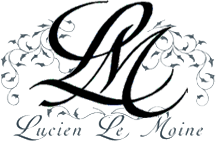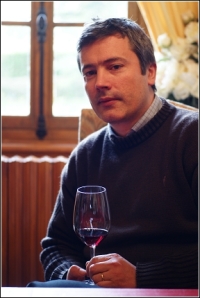
“Dazzling pretty much sums it up” – Antonio Galloni
The history of Burgundy includes the Citeaux of the Cistercian Monks – a beautiful, fine old Abbey south of Dijon – where wine was fermented on its fine lees in frigid cellars through summer months. The ancient fermentation practices recognized by the Monks of the Cistercian Order during the Middle Ages as well as the practice of selecting specific plots – or Crus – for the production of fine wines were the corner stone for today’s greatest wines of the Cote D’Or. Allowing wines to naturally ferment in barrel on their fine sediment – known as lees – produces beneficial levels of Carbon Dioxide (a natural preservative). This ancient practice allows modern proponents to avoid the overuse of Sulfur Dioxide in the winemaking practice.
Meet Mounir Saouma, a Lebanese monk who – along with his wife Rotem Brakir – established what has become the most talked about, Beaune-based micro-negociant in the Burgundy trade today. Mounir’s passion for great Burgundy was born from his work alongside Cistercian Monks not only in Burgundy at the Citeaux, but further blossomed during his time with the Monks while in Israel – where he met Rotem. Through the assistance of the Cistercians, the couple visited Citeaux many times together, and from there a mutual passion for the Cote’s great terroirs and the Cistercian’s vinification practices was ignited.
After leaving the order in 1999, Mounir established his micro-negoce with Rotem, naming it Lucien le Moine. Following the practices of old, their first guideline is to work exclusively with 1er and Grand Cru vineyard plots within the Cote D’Or – precisely as the Cistercians deemed appropriate. Taking this practice one step further, each vintage brings a new selection however as Mounir realizes that what makes Genevrieres perfect in 2004 might omit it from selection in 2007. And therein we find the magic that has made this micro-negoce the jewel of the Cote: a selection process to rival the greatest in the region.
Each harvest, Mounir visits his friends in Burgundy just after the harvest – when the first pressing has been completed. Once the selections have been made, the juice – jus-wine as it’s known – is placed in the Lucien le Moine barrels for aging. The le Moine barrels add yet another dimension, being from the Jupilles, which provide some of the most consistently tight-grained oak of any French forest. Toasted to the le Moine specifications, each barrel in the cellars is ordered precisely for Mounir, and Jupilles makes up 100% of the barrel selection Chez le Moine.
Once barreled, the juice rests on 100% of its fine lees without racking throughout its entire fermentation process. The wine is encouraged to feed upon these fine lees – through the ancient process of “battonages”, or stirring of the lees – which protects, balances and promotes complexity in the fermenting wine. During this process, the barrels are resting in the le Moine cellars, which are closed, cold, humid and very deep. And thanks to this, the malolactic fermentation process is able to last for many months – another aspect of the winemaking process that leads to exquisitely layered and profoundly flavored wines from Lucien le Moine.
Finally, when each barrel announces its readiness for bottling, the le Moine team bottles with respect for the ancient ways: never are their wines fined or filtered. This method allows for the naturally occurring Carbon Dioxide to be present in the finished wines, a natural element that ensures the ability for each of the Lucien le Moine wines to age gracefully for decades. And thanks to this element, Mounir recommends decantation for each of the wines when consuming them young. Each and every element of terroir – from the most sublime nuances of minerality to the brilliance of the Cote’s acidity – combine with the almost indescribable layers of extreme flavor alive in the very grapes themselves, and come together to build a taste sensation that one is not likely soon to ever forget. Tasting these wines is truly vinous perfection!
Just how good are they?
In the words of Antonio Galloni, when describing the 2010 le Moine White Burgundies, he would say:
“Dazzling pretty much sums it up…. This dazzling, drop-dead gorgeous wine is a pure pleasure to taste. Frankly, it is impossible to spit.”
And Steven Tanzer – after scoring the top wines here 99 points for 2010, succinctly summarized:
“The 2010s here should be extraordinary.”
Might be terribly difficult to locate – at a price suitable – but I assure you the search is worth it; exemplary wines!








